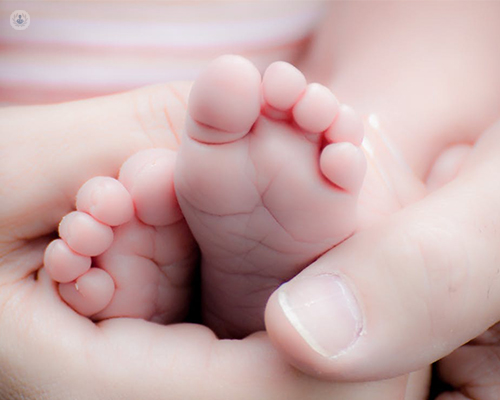Todo sobre la vitrificación de embriones
Written by:As with sperm and eggs, the freezing of embryos at low temperatures allows them to be used later. When the embryos are frozen, they are conserved in optimal conditions for the moment of implantation.
Until recently, embryo vitrification required an embryo freezing process that slowly cooled the cells to prevent the formation of ice from the water contained within them. But implantation rates were much lower than those achieved with fresh embryos.
Nowadays, the assisted reproduction specialists have a new, more advanced method, known as embryonic vitrification, that offers a greater effectiveness thanks to the increase of the survival of the embryos and to a higher rate of implantation, which supposes better rates Of pregnancy.

Embryo
The zygote, the first stage of human life, is born from the union of the sperm and the egg in a new cell with a nucleus and 46 chromosomes. When the first cell division of that union occurs, the embryo is created.
The embryonic phase extends until the 8th week of pregnancy, and is characterized by being a stage of intense cellular changes in which the embryo divides its cells successively. Normally, there are certain division patterns that allow to detect if an embryo is of good quality.
On day five of gestation, the embryo happens to denominate blastocisto, moment in which adopts a certain form. It is not until 7 or 8 days when the implantation of the embryo occurs naturally.
The earliest embryos and those in the blastocyst phase can be vitrified for later implantation by advancing fertility techniques.
Freezing of oocytes requires a different process, since they have not been fertilized and will require, when they are to be used, a spermatic microinjection process (ICSI) prior to implantation.
Differences between embryo freezing and vitrification
Cryopreservation of embryos has evolved remarkably in recent years. Unlike classical freezing, embryonic vitrification cools the cells incredibly quickly. They used to freeze at a slow rate of about 0.3 ° C per minute to try to keep the water inside and around the embryo from forming ice crystals.
Embryo vitrification, on the other hand, rapidly cools the cells at a rate of more than 15,000 ° C per minute, so that one could say that there is no time for ice crystals to form, but what is formed is one Kind of gel that does not damage the cells.
Success rate of embryo vitrification
This technique achieves a lower number of damaged embryos and, therefore, a higher rate of implantation. With the old method of freezing, one in three patients became pregnant, while with vitrification the success rate exceeds 50%. In addition, since there is a greater possibility of implantation of the embryo, a smaller number of embryos can be transferred and, thus, reduce the risk of multiple pregnancy without the treatment being less effective.



